Ben Randall is a photographer, film-maker and traveler. In September 2013 he returned to Asia to work on ‘The Human, Earth Project‘ – a six-month photographic and film project to help raise awareness of human trafficking.
He was searching for 100 people he photographed five years earlier, many of whom are poor and poorly educated – the demographic most at risk of human trafficking. He filmed the entire search with award-winning photographer, Moreno.
The project was inspired by May, a friend of Ben’s who was kidnapped from Vietnam and was believed to have been sold as a wife or prostitute in China. The search for May herself is the subject of a feature-length documentary called Sisters For Sale that has won awards around the world.
Here’s a week-in-the-life of Ben and Moreno’s journey – their final week in Myanmar, as they continue their search for four former portrait subjects amongst the villages of Shan State.
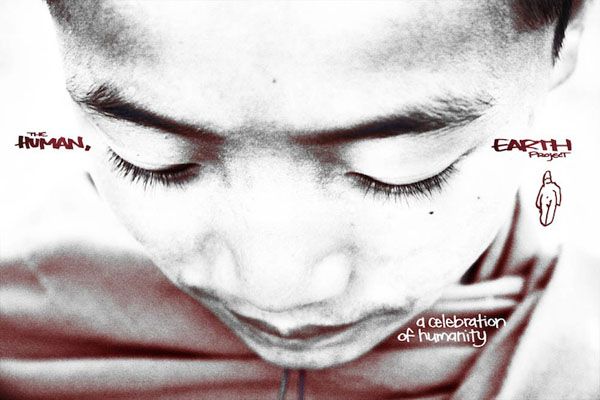
Update: May 2019 – May has been found!
This post was originally published in 2014. When Ben reached out to me again recently he shared a preview copy of Sisters For Sale with me, as a thank you for supporting him over the years.
I was utterly blown away by this documentary.
I think Sisters for Sale is something that everybody would benefit to see. Seriously.
Here’s an update from Ben:
In 2013, I made an epic journey through Asia to raise awareness of human trafficking. I was searching for 100 people I’d previously photographed across 10 countries, to learn their stories.
The journey was inspired by May, a friend who was kidnapped from her home in Sapa, Vietnam, in 2011.
The most impossible part of the journey was also the part that meant the most to me personally: to find May herself. Nobody had seen or heard from May since she’d been taken two years earlier.
Against all odds, I succeeded in finding May in a distant part of China in 2014. That was just the beginning of a long, dramatic journey to try to bring May home to her family in Vietnam.
May’s story is now told in the award-winning feature documentary, ‘Sisters for Sale’ .
‘The Professional Hobo‘ has been supporting our work since the beginning. In 2013, I wrote a week-in-the-life of our epic search through the remote villages of Myanmar – check it out below!
Update June 2020: The Book is Out
Since its release a little over a year ago, the Sisters for Sale documentary has won awards around the world, and is now available as a two-part special in 12 countries via the Discovery channel.
To get Ben’s very important message to even more people, the first of a trilogy of books has just been released.
Every Stranger’s Eyes depicts the first four years of the epic all-consuming journey Ben went through to find his friends, and the ever-deepening spiral of reality he found himself in with each step.
You can read the first two chapters of the book here, for free.
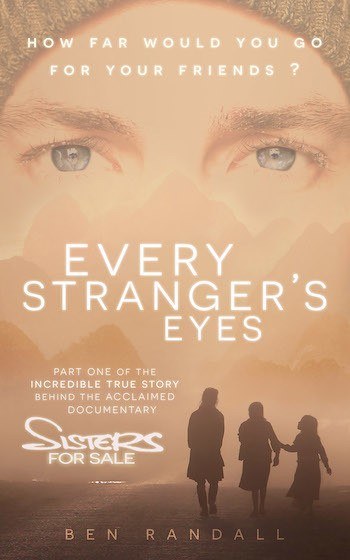
Day One: Friday (Burmese Hospitality, Even From Police)
After trekking to a remote village in search of one young man, Moreno and I learned he’d moved to a small town a hundred kilometres away. We had no way of knowing, however, that the town was inside a heavily militarized area, where foreigners were treated with great suspicion.
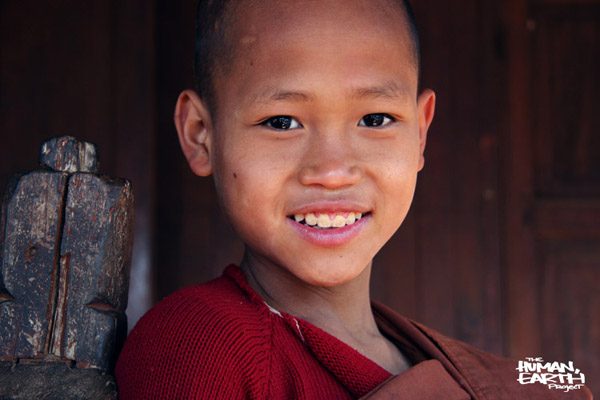
Moreno and I decided to hitchhike there, having discovered the incredible hospitality of the Burmese people. The first two rides we caught quickly and easily but, just as we were clambering up on top of the truck which was to take us to our final destination, we were caught by a soldier who insisted we accompany him to the nearby police station.
The last thing Moreno and I wanted was trouble with the authorities. Our visas expired the day before, so we simply smiled, nodded and walked away. We didn’t get far, however, before we were chased down by the head of the local immigration office.
‘The Human, Earth Project’ and Sisters for Sale has given us a lot of experience in charming our way in and out of various bizarre situations, and we were eventually given permission to continue on to our destination. There was a catch, however: we were to be under police escort, and spend no more than two hours in the area.
And so Moreno and I found ourselves filming entirely without permission, under the suspicious and impatient eye of the local police. When our two hours had expired and we still had no clues as to the whereabouts of our subject, the police insisted on taking us to the bus stop, to ensure we left the area before nightfall.
Instead of the bus stop, however, they escorted us to the immigration office – and bought us drinks. (Did I mention the incredible hospitality of the Burmese people?)
We took a late bus, and it was two hours after dark when it stopped in the small village where we’d planned to spend the night. We had a local friend there who took us to the hut of the village chief, and his entire family woke up to prepare a wonderful meal for us before we fell asleep, wrapped in blankets on the floor.
Day Two: Saturday (Searching for 3 Boys who Disappeared)
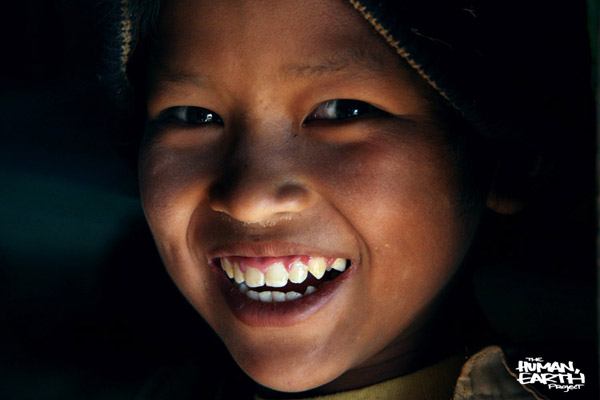
Five years earlier, I’d photographed three people in a nearby minority village. Moreno and I had already been there – twice – and had found only one. We still had no clues as to who the other two might be: nobody in the village had recognized them at all.
We were expanding our search across the local area. We’d searched a total of four villages already, and now we returned to search three more. We were shown one boy who bore a very strong resemblance to one of the boys I’d photographed, but after much debate we decided he was not the boy we were searching for.
After exhausting all alternatives, and on the point of giving up, we decided to stop for a third time in the village where the photographs had been taken. After denying all knowledge of the boys on our previous visits, one of the boys was suddenly recognized – by everyone.
The directions we were given to find the boy, however, led us absolutely nowhere and locals who had promised their assistance did nothing to help us. It was almost dark by the time we found the boy’s hut – locked and empty.
Moreno and I waited there until after nightfall, but the boy did not return home. Having slept little the previous night, we arranged food and accommodation with a local family, and I turned in early. Moreno went back to the boy’s hut, found him there with his family, and explained that we would return at 7am to speak with the boy.
Day Three: Sunday (Stymied by Local Families)
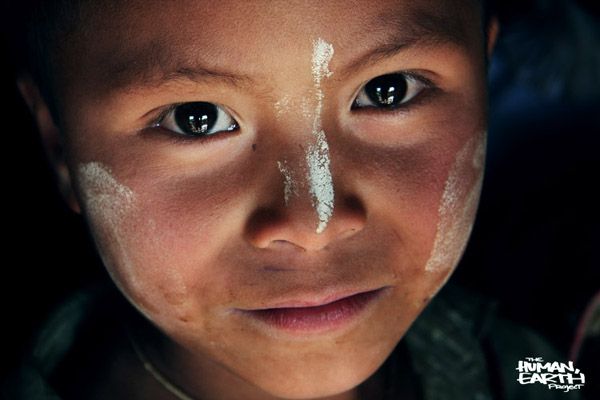
Moreno and I reached the hut at 6.45am. The boy’s parents, who had welcomed Moreno the night before, were now cold, even hostile. The boy himself was gone, and we soon realized they’d deliberately sent him away.
With the parents against us, there was nothing more we could do. The second boy I’d photographed had never been recognized at all, so we finally scratched them both off our list and began the long walk back to the nearest road.
We hitched a ride into town with three local youths, who stopped partway for a round of whiskey in a local bar. It had been a disappointing couple of days, and Moreno and I were both feeling worn down. We had only one subject left to find in Myanmar: a grandmother named Daw Ae we’d been trying to find for almost two weeks.
We’d been to Daw Ae’s village, only to be told by her family that she’d moved into town. We’d then found her shack in town, only to be told that she’d gone to a city hundreds of kilometres away to attend the birth of another grandchild.
Moreno and I were preparing to leave for the city when we learned that Daw Ae was coming back early just to meet us: a stroke of luck, at last! We spoke to her grandson, and arranged a meeting for the next day.
Day Four: Monday (Grandmother Daw Ae)
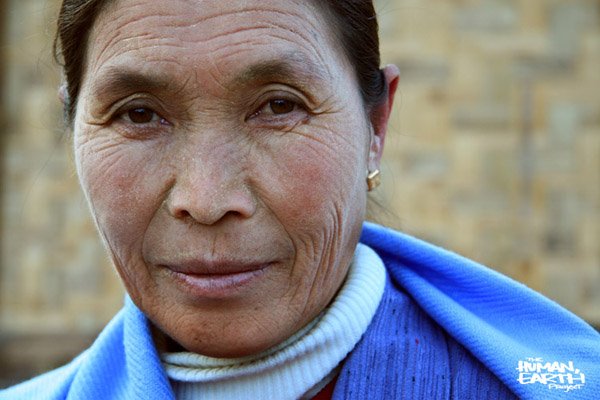
The next morning, as we were leaving our guesthouse, Moreno and I saw a familiar face – a local man who called himself Dance. He’d acted as our guide and interpreter for five days of trekking, before parting under strange circumstances. We’d since been trying to contact him, but hadn’t seen him for over a week.
Dance was an oddly endearing little man who seemed to survive on a diet of whiskey. He loved ‘The Human, Earth Project”, and had been of immense assistance to us – when he was sober. Having no other plans, he was happy to come and help us interview Daw Ae.
Daw Ae was waiting for us at her shack, and never in my life have I been so completely and immediately charmed by another human being. Within the first moments of meeting her, Moreno and I agreed that Daw Ae was by far our favourite of the forty-six subjects we’d found over the past three months.
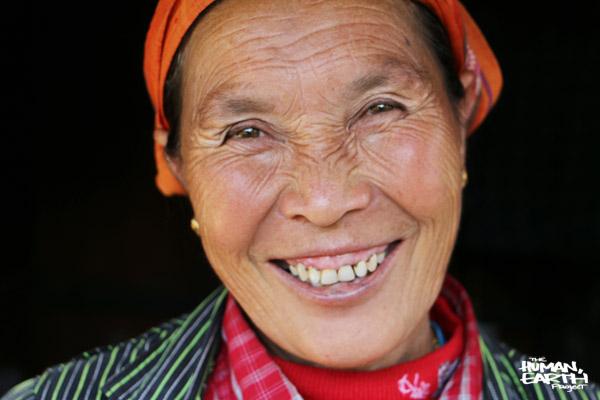
She hadn’t been able to eat all morning, she was so excited to meet us. She hugged us, took our hands, welcomed us into her home as if we were both long-lost sons. We spent five hours sitting on the floor of Daw Ae’s shack, while Dance interpreted her stories for us.
Daw Ae was a beautiful human being with a wonderfully warm smile, and a fascinating life story: the uneducated young wife of a drunken gambler, a mother of twelve children, a selfless survivor of dire poverty and back-breaking labour.
I returned again to her home that evening, to give Daw Ae copies of other photographs I’d taken in her village five years earlier. To thank Dance for all his help, we bought him lunch and dinner – a glass of whiskey, in both cases. Afterwards he took us to his home on the outskirts of town, to meet his elderly parents.
Day Five: Tuesday (Searching for Dance’s Padaung Aunt)
Having already overstayed our visas by several days, Moreno and I had planned to leave the country as soon as possible. However, the previous evening Dance mentioned something that sparked our curiosity.
Dance had an aunt from the Padaung minority – best known for the brass rings traditionally worn around their necks, wrists and ankles. She lived in a small town several hours away, quite close to a temple I’d been hoping to visit.
After having spent the past five weeks hard at work, Moreno and I decided to take a weekend. Dance gave us the contact details of his aunt, and told us how to get to the town. Every piece of information he gave us turned out to be wrong, and we never found the aunt.
The town was in an area that had, until six months earlier, been off-limits to foreigners. A local man estimated that no more than thirty foreigners had passed through. He took us to his home, gave us lunch, and we found ourselves conversing in Italian with a local priest who’d studied at the Vatican.
Our new friends arranged a meeting with another wonderful Padaung woman. Moreno and I spent the afternoon interviewing her, then rode on to the city with the temple I’d been hoping to see.
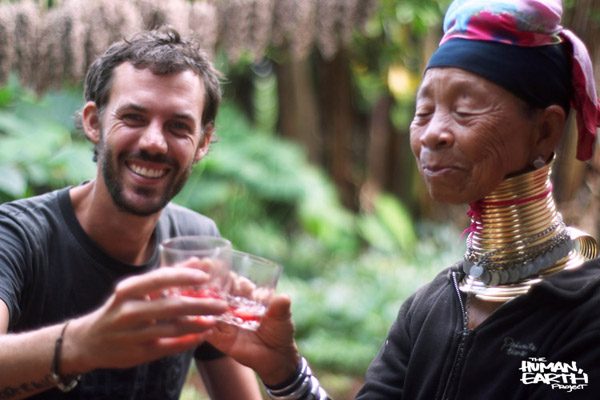
Over dinner, we befriended a group of local university students who presented us each with a ‘longyi’ (the traditional Burmese sarong worn by men and women alike) and insisted on giving us a tour of their city the next day.
Day Six: Wednesday (Touring With New Friends)
Moreno and I spent the morning with our new student friends, touring the temples of the city by motorbike. They were wonderful people, and it was a shame to leave so soon, but free time is a luxury we’ve been able to afford only in small doses.
Our entire journey is being made overland, by local forms of transport, and we were planning to leave Myanmar by the nearest border crossing at Tachilek. However, the road to the border passes through an unstable area which has long been closed to foreigners.
We’d heard conflicting rumours as to whether we’d be able to make it through to Tachilek or not. Our only other option was to leave Myanmar via Myawaddy, hundreds of kilometres to the south.
We caught two rides. The first was quick and comfortable, in the back of a brand new sports car. For the second we were cramped inside the cab of a logging truck, the biggest and slowest vehicle on the road, and the sun had long since set by the time we reach the main road east of the border.
We flagged down a local bus, and it was past midnight when we arrived in Taunggyi (the capital of Shan State) to begin the search for a bed.
Day Seven: Thursday (Leaving Myanmar)
It had been a long, relentless and highly successful month in Myanmar. Moreno and I had found and interviewed no less than thirty-six of the people I’d photographed five years earlier. We’d shot a lot of gorgeous footage, met some wonderful human beings, and had some amazing experiences.
Now all we had to do was reach the border, but it was not as easy as it seemed. We soon realized the road to Tachilek was still closed to foreigners, and it was being watched closely by the police and the military.
Moreno and I spent a frustrating morning trying to get through and failing, barely getting beyond Taunggyi itself.
Resigning ourselves to the long road back south, we tried to hitch a ride out of the city. A local man saw us, and circled around the block to come back and pick us up. Instead of driving us out of the city, however, he took us back into the centre, then stopped in the middle of the marketplace and left us sitting in the car.
After ten minutes of waiting, I was out of patience. I had no idea what the man was doing or why, but it wasn’t getting us anywhere. I took my bag and climbed out of the car, only to meet him coming back the other way.
In his hand, he had two bus tickets for us. He then drove us to the station and, despite our protests, insisted on buying us lunch.
The world is full of amazing people: all you have to do is get out there and meet them.
Sisters For Sale is Born

The next phase of ‘The Human, Earth Project’ took Moreno and Ben through Laos and Cambodia to Vietnam, to begin the search for May herself.
Again, I highly recommend you check out the final product from these many years of work, and watch Sisters for Sale. The story is gripping, insightful, and a culturally sensitive look at issues that go way deeper than what most westerners could comprehend.
Don’t see/can’t play the Sisters For Sale trailer above? Click here to Watch directly on Vimeo.

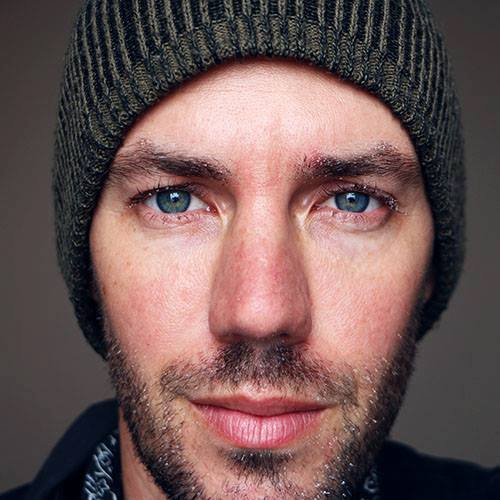

Hi Nora,
This is truly the most compelling “week in the life of” story you’ve hosted. After reading, I just stared off into space for a long time, lost in thought about what the story — and the human issue — it presents.
Thanks for this.
Josie
Thanks Josie – and I agree! I was so thrilled to receive this submission; being such a great cause and a riveting story to go along with it.
Love the photos!!!! I’ve always been a big “face” person, so you got my attention for sure. 🙂
Those two men are doing sth amazing and I’m glad to see so many people supporting this project.
Marysia – They ARE amazing! Glad you’re liking the project.
Thanks for supporting this Nora. You’re a rock star.
Thank you, John!
Wow Ben’s story reads like a movie. Amazing and quite inspiring.
Ryan
Hey Ryan,
I know right! Well it’s funny you should mention….it IS a movie! Totally worth seeing. 🙂